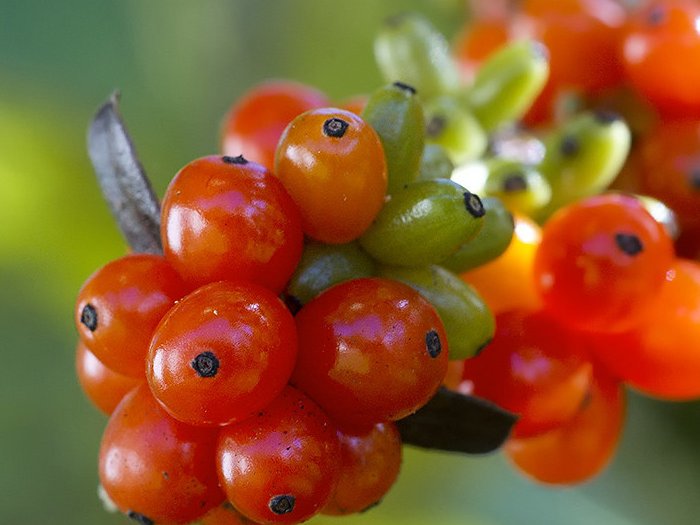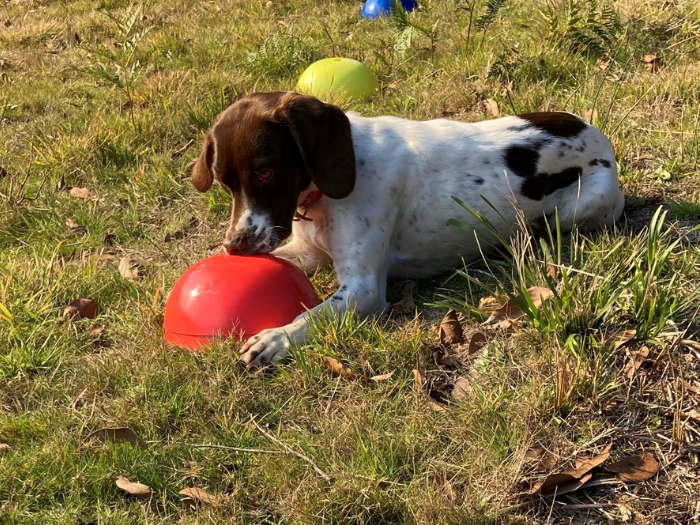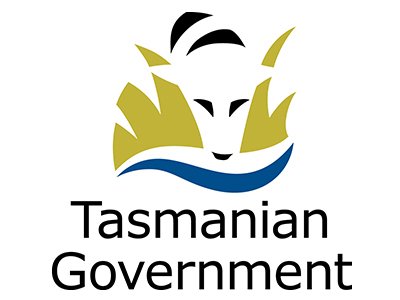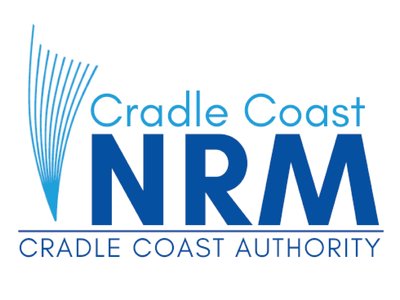Large Grants Round
The large grants round will provide funds to multi-year, large-scale projects that deliver widespread and lasting outcomes. The round targets nine weed species that pose a threat to Tasmania’s agriculture and the environment.
It aims to stop the spread or if possible, eradicate the species across broad landscape units, such as municipalities, catchments or regions.
To be successful, applications must be built on strong collaboration and engage broadly across the community. This may involve working with your neighbours, local council, other infrastructure providers, agencies and/or community groups.

Gorse (Ulex europaeus) is a target weed in the large grant round.
Applications
Applications
Stage 2: Round 2 - Large Grants Round.
Status: CLOSED
Grant amount: up to $50,000 per year, for up to three years.
Municipality: State-wide.
The Tasmanian Weeds Action Fund is a $5 million Tasmanian Government initiative, funded until 2024. Funds are being invested with farmers, land managers and other community organisations to tackle weeds that are impacting valuable agricultural and environmental assets.
Preparing your application
Preparing your application
In preparing your application, we suggest you:
- Register your details to receive notifications of new information during the application period.
- Read and understand the Targeted Large Grants Guidelines.
- Determine whether your project focuses on an eligible target weed.
- Talk to others about opportunities to be strategic and work together.
- For on-ground works, contact a registered, insured contractor for quotes - see Guide for Engaging Contractors.
- Complete the Targeted Large Grants Application Form.
- Get in touch with the Tasmanian Weeds Action Fund Coordinator at waf@nrmnorth.org.au or 1300 109 676 if you need assistance.

Originally introduced as a garden ornamental karamu (Coprosma robusta) is now a declared weed in Tasmania, and nominated as a target weed in the Large Grants Round.
![african lovegrass flickr harry rose 700x525].jpg](https://api.nrmnorth.org.au/assets/media/images/african_lovegrass_flickr_harry.2e16d0ba.fill-700x525-c90.jpg)
Nominated weed, African love grass (Eragrostis curvula) is generally unpalatable, produces copious seed, and can rapidly spread over and dominate degraded pastures.
Helpful resources
Helpful resources
The following resources may assist in developing your application.
- NRET Interactive Weeds Mapping Application to assist with identifying the distribution of weed species in Tasmania.
- The LIST map for Property Identification Numbers (PID) numbers required for your grant application.
- NRET Invasive Species Index for detailed information on priority weeds and management guidelines.
- Guide for Engaging Contractors.
- Guide for Developing a Weed Management Plan.
- Weed and Disease Planning and Hygiene Guidelines provides guidance for planning and includes a useful template.
- The Weed Management Act 1999 and its regulations to understand your legal responsibilities.
Reporting information
Reporting information
On completion of each year of your project, complete your progress report using the template provided below, and email it to waf@nrmnorth.org.au, along with images and other project outputs listed in your Management Agreement. The progress report includes the Statement of Expenditure. A statutory declaration confirming the progress report as a true record of expenditure is also required.
For information on who can sign a statutory declaration refer to this list: Who can sign a Statutory Declaration?
Please note that under the provisions of Section 132 of the Oaths Act 2001 (TAS), a Statutory Declaration is a written statement of facts in a formal, solemn document. A person who makes a false statement in a Statutory Declaration is guilty of a crime (Criminal Code Act 1924 s113) and can be fined, given a jail term, or both.
Record of Co-contributions
To keep track of the in-kind co-contributions of all project partners a tracking sheet is provided. This may be useful in comparing the 'real' in-kind amounts to those proposed in the Management Agreement, Annexure B.
Invoicing for Progress payments
Payment of your next grant instalment is based on satisfactory completion of implementation activities as detailed in Schedule 2 and Annexure A of your Management Agreement. This includes the supply of the Progress Report together with a tax invoice for completed tasks.
Variations
If you or your collaborators haven't delivered the activities in a given year of Schedule 2 of your Management Agreement, please contact NRM North's WAF Coordinator to discuss whether a variation to the Management Agreement is needed.
How to submit mapping data
All WAF projects that generate mapping information must use this workbook to return their data to NRM North. This data will be used to summarise the impact of the WAF program. Submit mapping data, including control information, by entering your data into the WAF-NVA Workbook.
Please provide other project spatial data to NRM North in suitable format e.g. shape and KML files, and attributes using the workbook.
A marked aerial photo to accompany the above is useful to those unfamiliar with the site for data checking.
Email the files to the waf@nrmnorth.org.au, and reference the Project Management Agreement No. in the subject line, for example, #NRMXXX.
NOTE: Final Report template for the final year will be to be added to the website in early 2024

Sugar is a scent dog funded by the program to detect priority weeds
Quick Q & A
Quick Q & A
NRM North recognises that most applicants will form a consortium and submit a joint application to deliver a project. Applications from consortia or groups are eligible if they are submitted via the options detailed in the guidelines.
Please download the Targeted Large Grant Guidelines to find out more.
Funding available for projects through the large grants round will be awarded to a maximum value $50,000 per year, up to three years (projects are to be completed within three years).
Eligible weed species for Targeted Large Grants are:
- Gorse (Ulex europaeus)
- serrated tussock (Nassella trichotoma)
- Chilean needle grass (Nassella neesiana)
- African feathergrass (Cenchrus macrourus, syn. Pennisetum macrourum)
- African lovegrass (Eragrostis curvula)
- Parramatta grass (Sporobolus africanus)
- yellow burweed (Amsinckia spp.)
- Heather (Calluna vulgaris)
- Karamu (Coprosma robusta)
Further information on the weeds eligible for funding in this Large Grants Round is provided in the Targeted Large Grant Guidelines.
To be successful, applications must be built on strong collaboration and engage broadly across the community. This may involve working with your neighbours, local council, other infrastructure providers or agencies, like TasWater, TasRail, State Growth Roads, forestry businesses, or community groups.
At a minimum, proposals should aim to remove outlier populations and reduce further spread of target weeds nominated for this round, to protect high value agricultural and environmental assets.
Activities must be planned across broad landscape units, i.e., landscapes, municipalities, catchments, or regions, engaging across land tenures with all key collaborators/land managers. Projects must demonstrate significant, measurable improvements to the productivity of agricultural land or the protection of environmental assets (see Criterion 4 in the Guidelines for further information) .
Projects must focus on one of the nine weeds listed in the Targeted Large Grant Guidelines.
Successful projects from previous rounds are listed on the NRET website at nre.tas.gov.au/invasive-species/weeds/tasmanian-weeds-action-fund
Submissions made using the Targeted Large Grants Application Form will be assessed by an independent assessment panel.
The type of purchases eligible for funding through the WAF Program include:
- weed suppressing materials and/or chemicals to be used in proposed grant activities (noting application of chemicals must be applied in accordance with all legal requirements); and/or
- tools, equipment and protective clothing to be used in proposed grant activities.
- spray or machinery contractors to delivery on-ground works
- support for community education and extension activities (meeting room hire, development and printing costs for printed educational materials).
- Consultant costs for project management support and to facilitate engagement and planning.
- purchases that support weed management programs (not the cost of items that would normally be purchased as part of existing agricultural or land management activities).
Not all expenditure on your proposed project may be eligible for grant funding. The Assessment Panel makes the final decision on what is eligible expenditure. You must incur the expenditure on your project between the start date and the end or completion date for your grant agreement for it to be eligible.
For more information refer to the Targeted Large Grant Guidelines.
Please refer to the document Guide for Engaging Contractors that provides tips on working with contractors who may undertake weeds management activities as part of your proposal.
More information
Please register your details to stay up to date with major updates on the Tasmanian Weeds Action Fund.
Should you wish to discuss your application please contact:
Tasmanian Weeds Action Fund Coordinator
Email: waf@nrmnorth.org.au
Phone: 1300 109 676
Partners and funding
This project is funded by the Tasmanian Government through the Tasmanian Weeds Action Fund facilitated by NRM North with support from NRM South and the Cradle Coast Authority.


